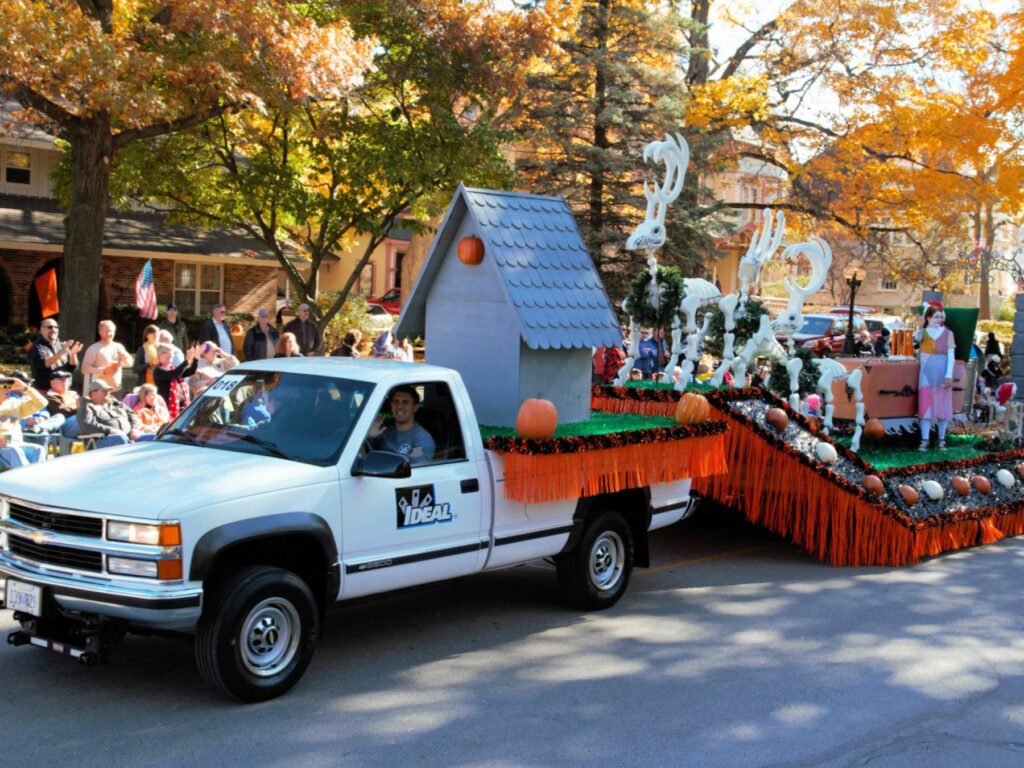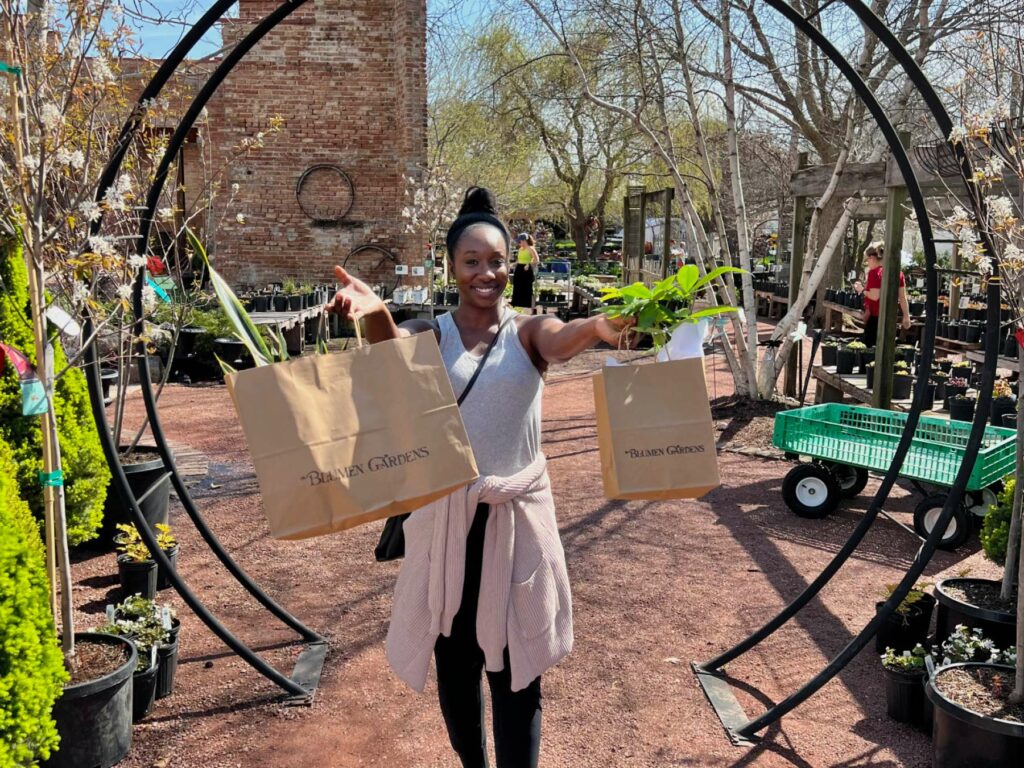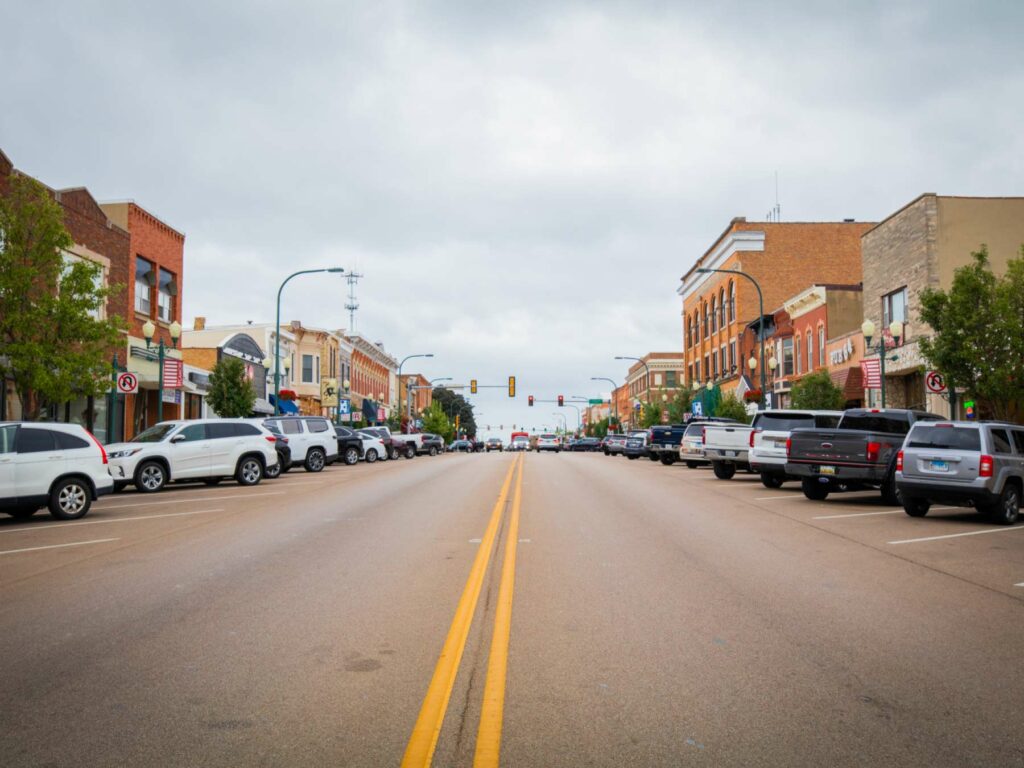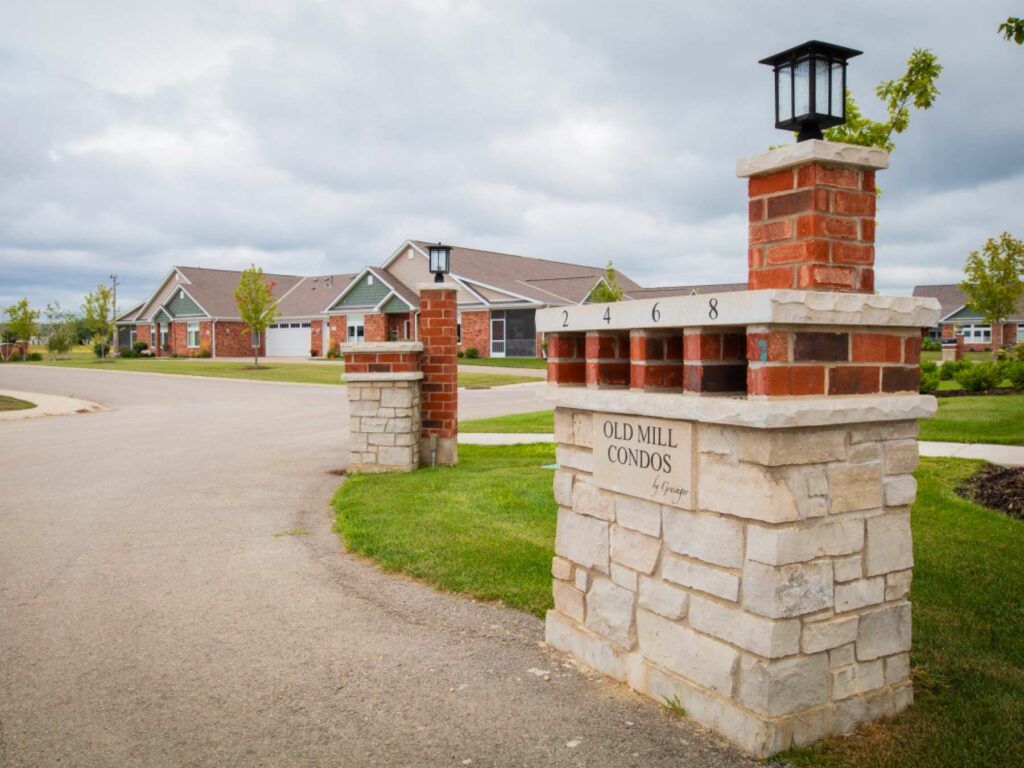With a reverence to the past, a host of beloved traditions and a crew of forward-thinking leaders, Sycamore is the kind of place where people feel right at home, in many ways.

Many people believe the grass is greener on the other side. For Dick Larson, it’s greener where you water it – and that’s his hometown of Sycamore.
“As a kid, I had a father who loved to go on vacations, so we went to all kinds of national parks and different places,” says the 78-year-old. “Having been around people of all kinds of backgrounds outside of the country, I have a fair-minded perspective. The community here is still comfortable for me.”
And it’s plenty comfortable for others, too, in this town of 18,000. Located in the heart of DeKalb County, Sycamore has the feeling of being a well-kept secret. Those who know it and love it see it as more than just a city to call home; they see a close-knit community that cherishes its history, celebrates its culture and embraces its future with open arms.

Preserving the Past
Time slows down in Sycamore. Its history is palpable at every corner.
Larson knows this feeling. He left for college and returned to spend nearly three decades delivering the mail. He’s seen the community evolve firsthand.
“I had a rural route for 19 years and I was a sub on several other routes before that,” Larson says. “Safe to say, I know my way around the area.”
Five years into retirement, he volunteers at the DeKalb County History Center, where the city’s story comes to life through exhibits, programs and extensive research.
But you don’t need a museum to recognize this community’s commitment to history. It’s everywhere you look.
Around the city’s core, homes from the 19th and 20th centuries blend together in a proud array. The Nellie Murphy House, built in 1908 by a man who made his fortune in the grain business, has been restored with elements like a wrap-around porch, stained-glass windows and hardwood floors.
Along tree-lined Somonauk Street, traces of the past are everywhere, including the final of three homes built by Sycamore’s first permanent settler, Carlos Lattin.
In the heart of downtown Sycamore, the DeKalb County Courthouse, dedicated in 1905 and decked in Romanesque Revival architecture, sets a backdrop for a multitude of community gatherings, from the Kishwaukee Valley Art League’s annual art show to weekly farmers markets and the city’s Pumpkin Festival, which attracts thousands of visitors each year.
“Many courthouses like ours often have this keep-off-the-grass attitude, but Chief Judge Bradley Waller and Circuit Clerk Lori Grubbs open their front yard to all of us,” says RoseMarie Treml, executive director of the Sycamore Chamber of Commerce.
From her post, Treml connects with business owners across the area, particularly among the array of specialty shops, salons, floral stores, boutiques and professional services scattered throughout downtown. This is an area with tons of character in its buildings, walkable streets and an unmistakable hometown charm.
“We get calls all the time from businesses in cities like Geneva saying they want a second location and are naturally looking toward Sycamore,” says Treml. “Right now, our membership base is around 85% small business, with maybe one vacancy in downtown.”
The city’s character and history are so valuable to locals that many pitch in to keep it alive.
Down at Sacramento Street and DeKalb Avenue, there’s a two-story brick depot, built in 1880 for the Chicago and Northwestern rail line. It’s now home to the DeKalb County Community Foundation. It was lovingly restored in 2012.
“The building had nice structure to it, but it needed repair,” Larson says. “It could have been demolished and put away, but they saved the building. Steam engines used to go past it, and now it still sits in downtown Sycamore. To see your community history restored and built on is remarkable.”
The depot’s not alone. Tucked away in a quiet neighborhood on Edward Street sits a former factory that’s now a family-run garden nursery, retail shop, event space and wedding venue.
What now is Blumen Gardens was once home to manufacturers of agricultural equipment and wire, but it was abandoned when co-owner Jill Mandeville’s parents, Joel and Joan Barczak, purchased it in 1999.
“When I was growing up, the whole ceiling was collapsed and the city was thinking of knocking it down,” says Mandeville. “It was a condemned building, but my parents slowly renovated it to what it is today.”

More than Just a Hometown
Like many Sycamore residents, Jerry Malmassari’s fondest memories of the city are intertwined with the biggest celebration of the year: Sycamore Pumpkin Festival. For his family, the festival isn’t just a fun gathering. Not for this 42-year member of the Sycamore Lions Club, which organizes the annual celebration.
“My daughter, my brother-in-law and my niece have been president of the pumpkin festival at one time, so this has been a family affair for the Malmassari family,” he says, adding that he, too, has chaired the event. “They all had to belong to community service organizations within the community, which meant they were invested in it.”
The festival started in 1962 after local entrepreneur Wally Thurow filled his front yard with decorated pumpkins. He invited the Lions Club to join him with a pumpkin decorating competition, and thus a festival was born.
Today, the event attracts more than 1,200 decorated squash, and that’s just one element of a festival that draws an estimated 250,000 people every year. Scheduled for Oct. 25-29 this year, the 62nd annual Pumpkin Festival includes a carnival, a 10K race, nonprofit vendors and a parade. The community comes out in force to support the event.
Nonprofit organizations line up near Main and State streets downtown to serve brats, funnel cakes and burgers.
Groups like Rotary Club, Kiwanis Club, and Boy and Girl Scouts sponsor everything from a pie-eating contest to a four-person golf scramble, while the Chamber hosts a 10K road run. They all show up for the Sunday parade through downtown.
“Festivals like that are a way to tie a community together,” says Malmassari. “I think it’s important for a town to stay knitted together that way.”

A History of Big Things
The first settlers to this area called their town Orange after they arrived in 1835. Two years later, James Waterman and Evans Wharry platted the town that became Sycamore.
The rich soil in this area was a boon for farmers, and Sycamore became a center of agricultural innovation. Charles and William Marsh introduced the Marsh Harvester in 1857, constructing a device that sped up the process of harvesting grain.
A year later, the railroad came with a 4.6-mile spur line from Cortland, about 4 miles south of downtown Sycamore. Freight trains came in 1859 and ushered in a new era of industrialism.
More than 150 years later, agriculture is still a powerful influence in Sycamore, but its economy is now supported by a wide range of industries.
“Our past city administrations have been critical in the impact they have made in our business community,” says Treml. “People like former mayors John Swedberg, Ken Mundy and Curt Lang, and our former city managers Bill Nicklas and Brian Gregory – they understood that Sycamore needed to grow our industrial base and commercial base, but at the same time, they wanted to maintain that small feel. If you look at where we are right now, compared to the past 20 years, we’ve been able to do that.”
Today, Sycamore is a pleasant balance of longtime businesses and newcomers.
The Suter Co. has been manufacturing food in town since 1925, and it currently specializes in shelf-stable foods like processed salads. Its work in product development and private-label manufacturing takes it across America. The company promotes a “FlexWork” program that offers flexible hours on the assembly floor, and every November it assembles thousands of volunteers to pack meals for Feed My Starving Children, a nonprofit that delivers hunger relief to people around the world.
Another major Sycamore manufacturer, Ideal Industries Inc., is a producer of connectors, hand tools and meters for electrical and telecommunications industries. It’s under fourth-generation family ownership.
“Ideal Industries is celebrating 100 years in Sycamore in 2024. To me, that is so impressive and humbling,” says Treml. “They’ve been able to stay afloat changing what they do and contributing to our employment base for 100 years.”
Sycamore is also home to Upstaging Inc., a nationwide entertainment staging outfit that handles stage lighting, event production transport and other production services for performers including Paul McCartney, Taylor Swift and the Rolling Stones.
“This is happening within this little town of 18,000 people,” says Cortney Strohacker, executive director of the DeKalb County Convention and Visitors Bureau. “You get that family feel, warmth and charm, but we also have all of these super innovative, original things happening that most people who live here don’t even know exist.”
Strohacker and her team spend plenty of time spreading the message beyond their county’s borders, as they attract tourists to the many small businesses and family attractions in town. Her message to outsiders sounds familiar to anyone else you ask about town.
“Sycamore has a very business-friendly climate compared to some other places,” says Strohacker. “It might seem like a sleepy small town, but they do their due diligence. They’re not just sitting there saying, ‘Come to Sycamore.’ They’re out there saying, ‘We really want your business in Sycamore. You should come here.’”

Collaboration and Connection
There’s a sense of community and togetherness that runs deep in Sycamore. It’s not just in the small businesses downtown. It’s also in places like the visitors bureau.
The organization shares space with a variety of county entities, including the mental health board, the regional office of education and the Veterans Assistance Commission. Their offices sit in an in-the-round hub with meeting rooms and other opportunities for open collaboration. Colorful word clouds with ideas like “planning,” “strategy” and “vision” cover the walls.
“I love Sycamore, but you’re only as good as your surrounding towns and communities,” says Strohacker. “So, we all work in an ‘all ships rise together’ manner.”
Strohacker and her husband, Heath, came to Sycamore in 1996 searching for a balance between rural and urban living. The Bartlett native fell in love with Sycamore’s scenic beauty and proximity to both Rockford and Chicago.
Raising their two children, the couple found there was far more to the community than meets the eye. At North Elementary School, Genoa Chamber of Commerce, and the county tourism bureau, where she’s been since 2019, Strohacker has found a culture of togetherness.
“I love seeing the town grow and I love being involved with the community,” Strohacker says. “What I fell in love with in Sycamore are these Norman Rockwell moments where you’re bundled up at the Pumpkin Festival or waiting for Santa to come to town. Everybody knows each other.”
That community connection is no coincidence, Treml says. Rather, it’s the product of a deliberate mindset that you’ll find across many segments of the community.
It starts as soon as newcomers arrive. Through a collaboration among the city, small businesses and the Chamber, Sycamore’s New Neighbor program sends welcome messages to new residents, encouraging them to stop by the Chamber office for a welcome bag filled with goodies.
The effort started, in part, due to a recurring comment that someone or another fell in love with Sycamore after driving through downtown. It’s because of comments like those that leaders across the city put a heavy emphasis on making downtown the best it can be.
“People say we’re so lucky to have such a quaint downtown in Sycamore, but it’s not luck. It’s hard work,” says Treml. “We’re lucky enough to have important community leaders who understand that we must communicate and collaborate. Everybody understands that what happens down the street or on one side of town affects the entire community.”
Several years ago, leaders from the visitors bureau, the Chamber and the park district came together to ask how they’re supporting each other. They soon realized it was smart to compare calendars to prevent overlapping schedules, foster communication and promote collaboration, Strohacker says.
“That collaboration is the key to everything being successful, not only within your community but within the county and the state,” says Strohacker. “At the end of the day, we’re all helping each other. You’re only as good as who you’re surrounded by.”

Eyes on the Horizon
Preserving its rural charm while embracing growth is top of mind for many in Sycamore. So, it’s easy to see why people like Treml get excited about Communities by Granger, a local real estate developer that’s built more than 400 homes in DeKalb County and three luxury senior communities in Sycamore.
“Granger’s development along Illinois Route 23 heading north of town is a huge bonus for Sycamore,” says Treml. “Many communities I talk to are having issues where they don’t have upscale communities for that 55-or-better age group, so what he’s doing for this community is outstanding.”
There’s also an eye on housing for young professionals and their families, particularly as homebuilders like Shodeen leave their mark upon the city.
After all, it’s that family-friendly environment that’s brought many people to Sycamore, and it’s the enduring relationships nurtured over time that have kept them here. Just ask Treml.
“The professional relationships the Chamber has cultivated over the past 108 years have blossomed into multigenerational collaborations in our community,” says Treml. “These are people who live, work, raised their families and have retired in Sycamore. These are our neighbors and friends who step up when they are needed physically and financially to keep Sycamore a thriving, quaint, distinct community unlike any other in northern Illinois.”




















































